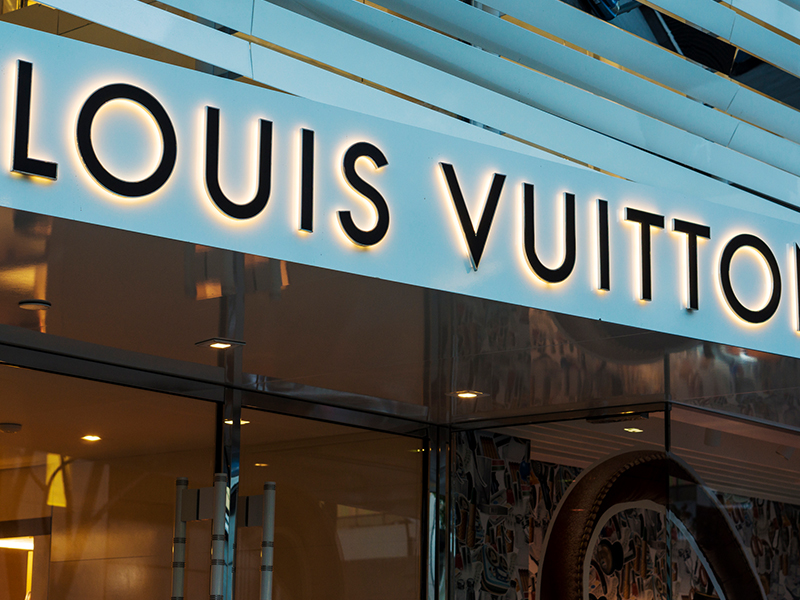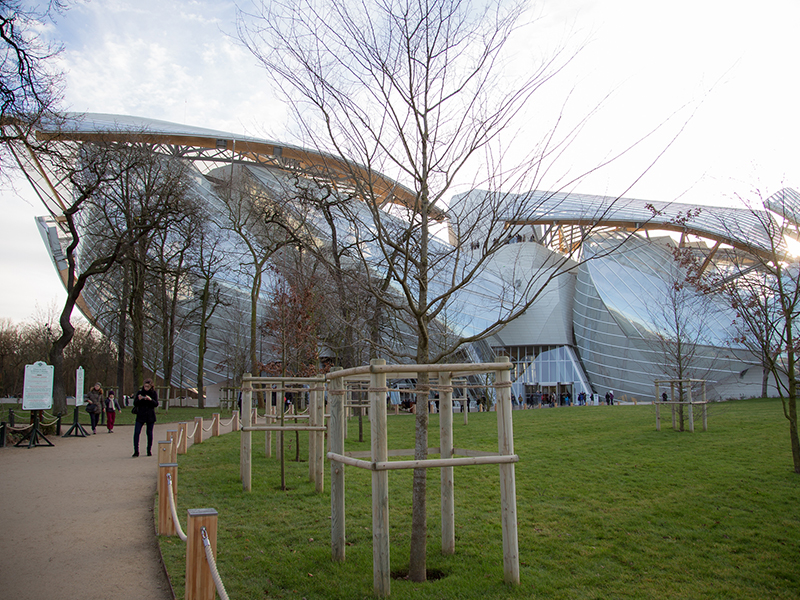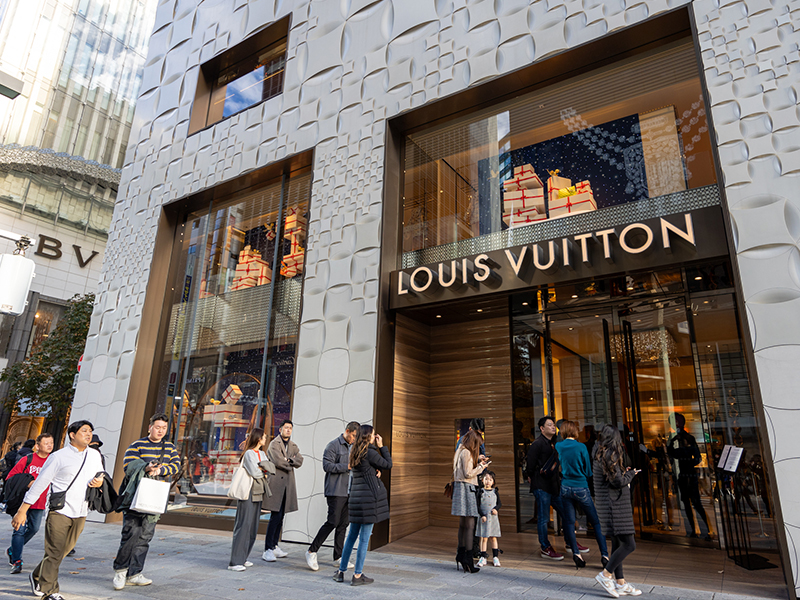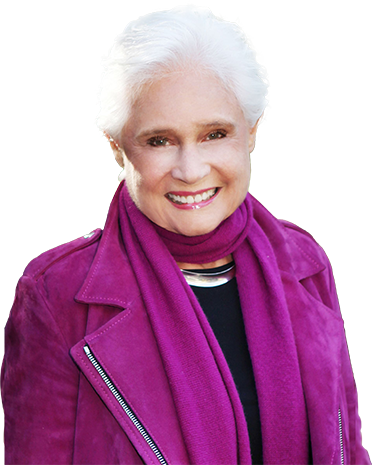Beverly Hills’ next landmark is Louis Vuitton’s bold vision for Rodeo Drive

Louis Vuitton has been a cornerstone of luxury in Beverly Hills, California, for over four decades, and now it is bringing a bold new vision to the city.
Louis Vuitton’s legacy in Beverly Hills, California spans over four decades, with its Rodeo Drive boutique long considered as one of the maison’s top-performing global locations. This iconic address has served not just as a retail space, but as a symbol of the brand’s stature in the world’s most prestigious fashion district. But now, Louis Vuitton is poised to take that presence to unprecedented heights.
The house has announced a new architectural statement for Rodeo Drive: a transformative, two-building flagship store set to break ground in 2026 and open in 2029. Designed by Pritzker Prize-winning architect Frank Gehry, with interiors by celebrated designer Peter Marino, the flagship will anchor a full city block, redefining the intersection of luxury, culture, and urban design in Beverly Hills.
Here’s what we know so far.
FROM HOTEL TO HIGH FASHION
Before plans for the new Louis Vuitton flagship took shape, the site was slated for something even more ambitious: the United States’ first Cheval Blanc hotel.
The hotel that could have been
LVMH spent three years developing a plan for the ultra-luxury property, which would have included 109 rooms and expansive wellness, dining, and retail amenities. To house everything, the plan called for a nine-story structure on Beverly Drive and another four stories on Rodeo. It also required the demolition of at least four existing buildings and the removal of over 5,000 truckloads of debris and soil.
The City Council approved the project in 2022, with Cheval Blanc projected to generate over $778 million in unrestricted city revenue across three decades.
The project, however, drew swift opposition from Beverly Hills’ residents. They raised concerns over how the $2,000-a-night hotel would disrupt the city’s small-town character. More concerns over building height and traffic eventually spurred a referendum in May 2023, where voters decisively rejected the hotel proposal.
A new vision, same ambition
Rather than retreat, LVMH pivoted. Instead, the group reimagined the site’s purpose. Rather than pursue hospitality, they returned to what they know best: creating immersive, high-impact retail experiences.
The result is a new flagship designed not just to serve clients but to make a statement about Louis Vuitton’s scale and presence in Beverly Hills, California. The project retains the ambition of the original hotel—monumentality, visibility, and influence—but reinterprets it through the lens of retail and brand experience. What began as a hospitality concept has evolved into a destination that reflects Louis Vuitton’s global identity in a more visible and enduring form.
WHAT TO EXPECT FROM LOUIS VUITTON’S NEW FLAGSHIP
Spanning Rodeo Drive to Beverly Drive, the flagship will unfold as two sculptural volumes linked by elevated walkways. Each structure offers a distinct function while maintaining seamless architectural and experiential coherence.
Two buildings, one vision
- Rodeo Drive: Three floors of immersive retail
- Beverly Drive: Culture, café, and exhibition
The flagship’s Rodeo Drive building will encompass approximately 45,000 square feet across three levels dedicated to retail. Each floor will be thoughtfully organized by product category, creating a seamless experience for clients exploring the house’s full range of offerings. Women’s and men’s ready-to-wear, travel, watches, jewelry, beauty, and fragrance will each be showcased in dedicated spaces designed to reflect the spirit of the collection.
Above the retail floors, a rooftop garden terrace will offer a calm retreat from the street below. Private client salons will offer personalized service in a setting that blends hospitality with retail, reflecting the house’s vision of luxury as both product and experience.
Across the block, the former Paley Center for Media will be transformed into a 55,000-square-foot hub. This marks a significant shift in how Louis Vuitton engages the public, positioning the Beverly Drive side not just as an entrance, but as an entry point into the brand’s cultural universe.
The ground level will feature an exhibition lobby and a café, while two upper levels will be devoted to immersive exhibitions underscoring the brand’s continued evolution into a cultural entity. This will be Louis Vuitton’s first permanent space of its kind in both Beverly Hills, California, and the United States.
A rooftop restaurant with indoor-outdoor seating for up to 100 guests will crown the structure, further extending the house’s hospitality offering.

The Fondation Louis Vuitton stands as a striking testament to the enduring creative partnership between Frank Gehry and the house.
A sculptural masterpiece by Frank Gehry
The flagship’s exterior, as revealed through conceptual models, bears Frank Gehry’s unmistakable imprint. Pleated and curvilinear, the façade evokes draped fabric caught mid-motion—an abstract yet tactile homage to haute couture.
The 20-year Louis Vuitton and Frank Gehry partnership
This marks a powerful return for Gehry, whose architectural dialogue with LVMH spans two decades. It all began in 2001, when LVMH founder Bernard Arnault enlisted him to design a space for his private art collection. The result was the Fondation Louis Vuitton, which opened in 2014 in Paris’ Bois de Boulogne. With its glass sails and layered transparency, the building not only became a cultural landmark but also cemented Gehry’s role as a creative force within the LVMH universe.
Since then, Gehry’s creative dialogue with Louis Vuitton has moved fluidly between disciplines. In 2023, Louis Vuitton released an 11-piece handbag collection by Gehry, featuring sculptural forms that echoed his architectural style. Highlights included the Capucines MM Floating Fish, inspired by the fish-shaped lights from the Fondation Louis Vuitton, and the Capucines Mini Blossom, which referenced the translucent floral stoppers of the Les Extraits perfume bottles he designed for the house.
With the Rodeo Drive flagship, Gehry’s artistry returns to the scale of buildings, reimagining the retail experience through a lens of form, movement, and imagination. It’s a continuation of a long-standing collaboration rooted not just in design, but in shared values: experimentation, elegance, and a fearless embrace of the avant-garde.
Frank Gehry, in form and legacyFrank Gehry is one of the most influential architects of the modern era, known for redefining architecture through a body of work that resists easy classification. Often described as deconstructivist, his designs challenge traditional symmetry and structure, favoring movement, fragmentation, and sculptural expression. Frank’s use of unconventional materials such as chain-link fencing, unpainted plywood, and corrugated metal reflects his belief that architecture should provoke thought as much as serve function. Some of his most famous works outside the LVMH partnership includes:
|
Architecturally intimate interiors by Peter Marino
For Louis Vuitton’s upcoming Beverly Hills, California, flagship, Peter Marino’s hand will shape every detail, from the fluid procession of retail galleries to the refined warmth of the café and cultural spaces.
On the Rodeo Drive side, Marino will shape three levels of retail with his signature attention to material, flow, and proportion, crafting spaces that guide clients intuitively through the maison’s core categories. On the Beverly Drive side, his design extends to the café, exhibition lobby, and rooftop restaurant, bringing the same precision and visual clarity to hospitality and cultural spaces as he does to retail.
The scale of the flagship presents Marino with a rare opportunity to blend retail, art, and hospitality in a single, unified vision. These spaces will showcase his ability to balance atmosphere with precision, creating environments that are both immersive and carefully composed.
Marino’s creative legacy with LVMH
Peter Marino’s influence across the LVMH portfolio is equally expansive. He has been instrumental in shaping Louis Vuitton’s retail identity over the past two decades, designing three to seven boutiques annually, each uniquely tailored to its locale.
In Paris, for example, Marino transformed Maison Vendôme into a flagship that blends classical architecture with contemporary art, featuring works by Annie Morris and Vik Muniz. In London, his New Bond Street boutique has a bold logo-covered façade. In Tokyo’s Ginza district, he collaborated with Jun Aoki to redesign the Namiki store as a shimmering, organic tower that draws from natural forms and local sensibilities.
Though his interior concept for the Cheval Blanc in Beverly Hills was ultimately shelved, it was envisioned as an elegant expression of his signature style: restraint layered with luxury, volume with intimacy.

Peter Marino has shaped the look and feel of Louis Vuitton boutiques worldwide, bringing decades of design vision to the house.
Peter Marino, by designFew names in luxury architecture are as synonymous with refinement and brand identity as Peter Marino. Trained as an architect and known for his command of material, texture, and spatial rhythm, Marino has shaped the interiors of the world’s most influential fashion houses. In addition to Louis Vuitton, Marino has designed for Dior, Bulgari, Fendi, and Hublot. His work doesn’t just support the brand, it often becomes part of the brand’s visual vocabulary. Marino’s work goes far beyond visual appeal; it choreographs movement, emotion, and intimacy within a retail environment, always placing the client at the center. Some of his other notable works include:
|
WHAT’S NEXT FOR LUXURY RETAIL IN BEVERLY HILLS?
Beverly Hills is undergoing a significant transformation, with luxury fashion houses redefining the retail experience through ambitious architectural projects. Let’s take a look at recent and planned developments on Rodeo Drive:
- Chanel: In May 2023, Chanel inaugurated its largest U.S. boutique at 400 North Rodeo Drive. The four-story, 30,000-square-foot flagship, designed by Peter Marino, more than doubles the size of its previous location. The boutique offers an expansive showcase of Chanel’s fashion, accessories, and fine jewelry collections.
- Cartier: Cartier is set to unveil a new three-story boutique designed by Foster + Partners. The 45-foot-tall structure will encompass three levels of retail space, a basement, and an outdoor terrace on the third floor. Construction is expected to commence soon, with the boutique anticipated to open in 2027.
- Christian Dior: Christian Dior is consolidating its men’s, women’s, and children’s lines into a singular “House of Dior” at 317–323 North Rodeo Drive. The forthcoming three-story, 47,900-square-foot flagship, also designed by Peter Marino, will feature outdoor terraces on each floor and a rooftop café. The project is slated for completion in 2026.
These developments underscore a broader trend in luxury retail: the creation of immersive environments that transcend traditional shopping. By integrating architectural innovation with curated experiences, brands like Louis Vuitton are changing up the retail landscape of Beverly Hills, California, and ensuring Rodeo Drive remains at the forefront of global luxury destinations.
GET CLOSER TO THE NEXT CHAPTER OF BEVERLY HILLS
As someone who has spent decades immersed in the world of luxury real estate in Beverly Hills, I’ve seen how architecture, design, and legacy brands shape the soul of this city—and how effortlessly people fall in love with it.
If this next chapter for Rodeo Drive inspires you to imagine your own place in Beverly Hills, I invite you to explore the market with me, Joyce Rey. From iconic estates to refined contemporary homes, there is extraordinary opportunity here. I would be delighted to help you find a residence that reflects your vision and lifestyle. Get in touch with me at 310.291.6646 or send an email today.

Browse our latest news and updates below

![[ai_client_name]](https://joycerey.com/app/themes/joycereycom_2024/assets/images/site-logo-white.svg)
